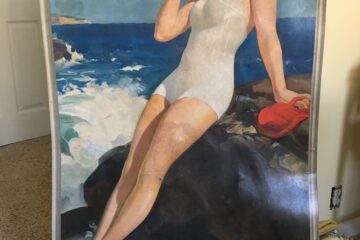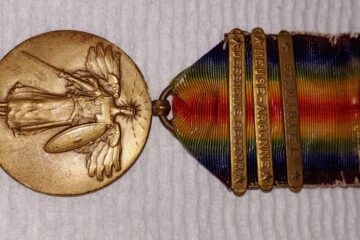Art Authentication: An In-Depth Overview
Art authentication is the process of verifying the authenticity of a piece of art, ensuring that it is indeed the work of the artist it is attributed to. This practice is critical in the art world as it directly influences the artwork’s value, provenance, and cultural significance. Authentication involves a blend of scientific, historical, and artistic analysis, each contributing to the verification process.
Importance of Art Authentication
- Market Value: The financial value of a piece of art is highly dependent on its authenticity. Forgeries or misattributions can dramatically decrease an artwork’s value. Conversely, confirming a piece’s authenticity can substantially increase its worth.
- Historical Integrity: Authentication helps preserve the historical accuracy of an artist’s body of work. Accurate identification ensures that the artist’s legacy is correctly represented and maintained.
- Legal Implications: The art market is heavily influenced by legal considerations. Authentication can prevent legal disputes over ownership and provenance, protecting both buyers and sellers.
- Cultural Significance: Artworks often carry cultural or historical significance beyond their monetary value. Authenticating these pieces helps in preserving cultural heritage and ensuring the accurate representation of historical narratives.
Methods of Art Authentication
- Provenance Research:
- Provenance refers to the documented history of an artwork’s ownership. Tracing the ownership history can often verify authenticity, especially if the piece has a well-documented lineage.
- Gaps in provenance can raise suspicion, while a clear and continuous history increases the likelihood of authenticity.
- Scientific Analysis:
- Material Analysis: Techniques such as X-ray fluorescence (XRF), infrared reflectography, and dendrochronology (tree-ring dating) can help identify the materials and methods used. For example, discovering a modern pigment in a painting purportedly from the Renaissance would indicate a forgery.
- Carbon Dating: This technique is used to determine the age of organic materials found in the artwork, such as wood or canvas.
- Forensic Analysis: Advanced methods like DNA analysis of materials (e.g., animal glue) can provide further evidence of authenticity.
- Stylistic Analysis:
- Experts analyze the style and techniques used in an artwork to confirm that they align with the known characteristics of the artist’s work. This involves a deep understanding of the artist’s unique brushwork, color palette, and compositional choices.
- Comparative studies with authenticated works by the same artist can reveal inconsistencies or confirm authenticity.
- Signature and Inscription Verification:
- Verifying the artist’s signature or any inscriptions can be a key part of authentication. However, signatures alone are not always reliable, as they can be forged or added later to deceive buyers.
- Expert Opinion:
- Often, the judgment of experienced art historians or curators plays a critical role. Their deep knowledge of the artist’s oeuvre, combined with their expertise in identifying stylistic nuances, can provide crucial insights.
Art authentication can be provided by different companies. In the link is an example of such a service.
Challenges in Art Authentication
- Sophisticated Forgeries: Advances in technology and techniques have led to increasingly sophisticated forgeries that can deceive even seasoned experts. Forgeries might involve not just the artwork itself but also fabricated provenance documents.
- Disputed Attributions: In some cases, multiple experts may disagree on the authenticity of a piece. Such disputes can lead to lengthy legal battles and unresolved questions about the artwork’s true origin.
- Market Pressures: The high stakes involved in art authentication can lead to conflicts of interest, with pressures from owners, dealers, or auction houses potentially influencing the authentication process.
- Technological Limitations: While scientific methods are powerful, they are not infallible. New techniques continue to emerge, but they may still leave some questions unanswered or be inconclusive in certain cases.
Notable Art Authentication Cases
- Leonardo da Vinci’s “Salvator Mundi”:
- One of the most famous and controversial cases of art authentication. Initially attributed to a follower of Leonardo, it was later authenticated as a genuine Leonardo work. The painting’s authentication increased its value exponentially, leading to its sale for $450 million in 2017.
- The Beltracchi Scandal:
- Wolfgang Beltracchi, a prolific forger, created and sold numerous fake paintings by famous artists, such as Max Ernst and Heinrich Campendonk. His forgeries were so convincing that they fooled experts for years until forensic analysis exposed them.
- Van Gogh’s “Sunset at Montmajour”:
- Initially dismissed as a fake, this painting was later authenticated as an original Van Gogh after extensive research, including stylistic analysis and letters written by the artist that referenced the work.
The Future of Art Authentication
The field of art authentication is constantly evolving. As forgers develop more sophisticated methods, authenticators must stay ahead with cutting-edge technology and research. The integration of digital tools, like blockchain for tracking provenance and AI for stylistic analysis, is already beginning to shape the future of the field. These advancements promise to increase the accuracy and reliability of art authentication, protecting the integrity of the art market and preserving cultural heritage for future generations.
In conclusion, art authentication is a complex, multifaceted discipline essential to the art world. It blends science, history, and expert analysis to protect the value, integrity, and legacy of artworks, ensuring that the stories they tell are truthful and enduring.



0 Comments